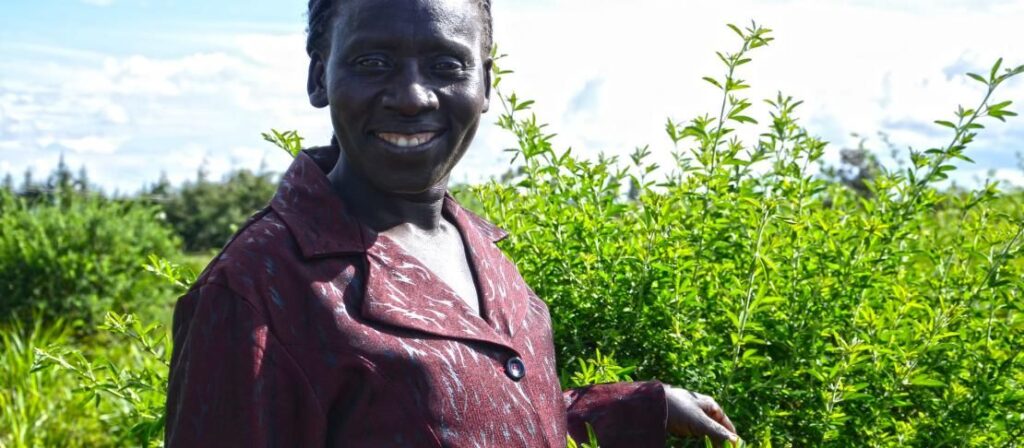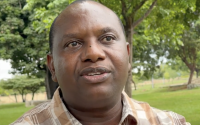Undercounting of agroforestry skews climate change mitigation planning and reporting

Agroforestry is overlooked in global climate change reporting systems, resulting in missed opportunities to account for a major carbon sink.
BURLINGTON, VERMONT – Farmers incorporate trees into fields and pastures to earn cash from fruit or wood, increase fodder and shade for livestock, promote soil health or protect against wind or water erosion. In all cases, farmers contribute to climate change mitigation by increasing soil and biomass carbon sequestration.
But it appears they are a step ahead of the United Nations Framework Convention on Climate Change, the global organization that aims to stabilize our climate.
In an article published today in the journal Agriculture, Ecosystems and Environment, scientists expose the lack of measurement of and reporting on agroforestry in international climate agreements. Many countries intend to sequester carbon through agroforestry to help meet climate change mitigation targets, but the ability to document sequestration through agroforestry is often severely limited.
Scientists call for improved accounting and visibility, including through better data and satellite imagery, for agroforestry to support increases in food production and massive scaling of soil and biomass carbon sequestration.
Explicit ambitions, minimal reporting
Just as farmers value trees on their farms, 40% of developing countries name agroforestry as a strategy for adapting to and mitigating climate change. In Africa, 71% of countries identify agroforestry as a critical climate strategy.
However, research being released shows that just sixteen developing countries provided quantitative estimates that include the number or areal extent of trees outside forests.
The gap between what is reported and what could be reported is immense: scientists have estimated that some type of agroforestry is practiced on 43% of all agricultural land—over 1 billion hectares—providing subsistence to more than 900 million people.
“Without quantification and explicit reporting on agroforestry, we can’t accurately estimate the importance of agroforestry to national strategies or global climate goals,” explained Todd Rosenstock, lead author of the article and scientist with World Agroforestry (ICRAF) and the CGIAR Research Program on Climate Change, Agriculture and Food Security (CCAFS).
“Having accurate information regarding the impact of agroforestry on farmers’ livelihoods and climate change mitigation will attract financial support for immediately expanding agroforestry across entire landscapes,” Rosenstock said.
Immediate action
Scientists recommend four steps to improve national and global accounting of agroforestry, with recognition that better measurement, reporting and verification of farm-scale, national, and global benefits of agroforestry are necessary to tap transformative support for large-scale agroforestry. In many cases, capacity building and use of existing data could improve accounting of agroforestry.
The four recommendations to be undertaken by national and global scientists and policy-makers are:
- Develop accessible approaches for representation of lands with agroforestry.
- Create guidelines for agroforestry reporting to improve relevance to national policy and transparency.
- Develop carbon stock change and emission factor data and databases relevant for reporting requirements.
- Navigate the institutional arrangements needed to include agroforestry in MRV.
“Agroforestry is an effective and essential strategy for climate change adaptation and mitigation. Improving accounting in the sector is absolutely essential to catalyzing support – including private sector climate finance – to achieve Paris Agreement goals,” said Lini Wollenberg, co-author and scientist with the CCAFS Low Emissions Development Flagship and the University of Vermont.
Transparency of climate actions, including in agroforestry, is essential for long-term climate stability.
To arrange interviews with authors, please contact Julianna White, Program Manager, CCAFS and UVM, julianna.m.white@uvm.edu, +1.802.777.7017
Authors and affiliations
1. Todd Rosenstock, World Agroforestry, Democratic Republic of Congo
2. Andreas Wilkes, Values for development Ltd, United Kingdom
3. Courtney Jallo, World Agroforestry, Nairobi
4. Nictor Namo, World Agroforestry, Nairobi
5. Medha Bulusu, World Agroforestry, Nairobi
6. Marta Suber, World Agroforestry, Lima
7. Damaris Mboi, World Agroforestry, Nairobi
8. Rachmat Mulia, World Agroforestry, Hanoi
9. Elisabeth Simelton, World Agroforestry, Hanoi
10. Meryl Richards, University of Vermont, CGIAR Research Program on Climate Change, Agriculture and Food Security (CCAFS) (now with Ceres)
11. Noel Gurwick, United States Agency for International Development (USAID), Washington
12. Eva Wollenberg, University of Vermont, CGIAR Research Program on Climate Change, Agriculture and Food Security (CCAFS)
Acknowledgments
The research was funded by the Sustainable Landscapes Group of the United States Agency of International Development (USAID). The work was implemented by World Agroforestry and Values for Development Ltd. as part of the CGIAR Research Program on Climate Change, Agriculture and Food Security (CCAFS), under the Low Emissions Development Flagship, which is carried out with support from the CGIAR Trust Fund and through bilateral funding agreements. For more information visit https://ccafs.cgiar.org/donors.


